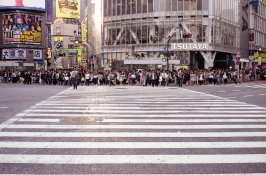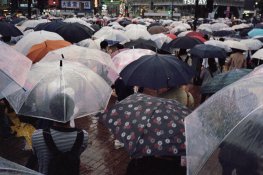Hi,
I shot portra 400 at 320 - 400 EI and getting different results that I can't explain.
Process is
Other times it works just fine.
Any ideas what I am doing wrong? Should get rid of the yellow in the RGB tonal curves panel?
here are two examples, one that worked and one that didn't.


I shot portra 400 at 320 - 400 EI and getting different results that I can't explain.
Process is
- scan and expose to the right
- import to Lr and invert tonal curve
- set WB, based on white "KODAK PORTRA" film markings
- export to TIFF and import again (to get around the upside-down controls after inverting)
- set WB (usually I click on concrete or something grayish to get closer and then fine-tune)
- adjust midtowns via exposure slider
- set black and white points
Other times it works just fine.
Any ideas what I am doing wrong? Should get rid of the yellow in the RGB tonal curves panel?
here are two examples, one that worked and one that didn't.











